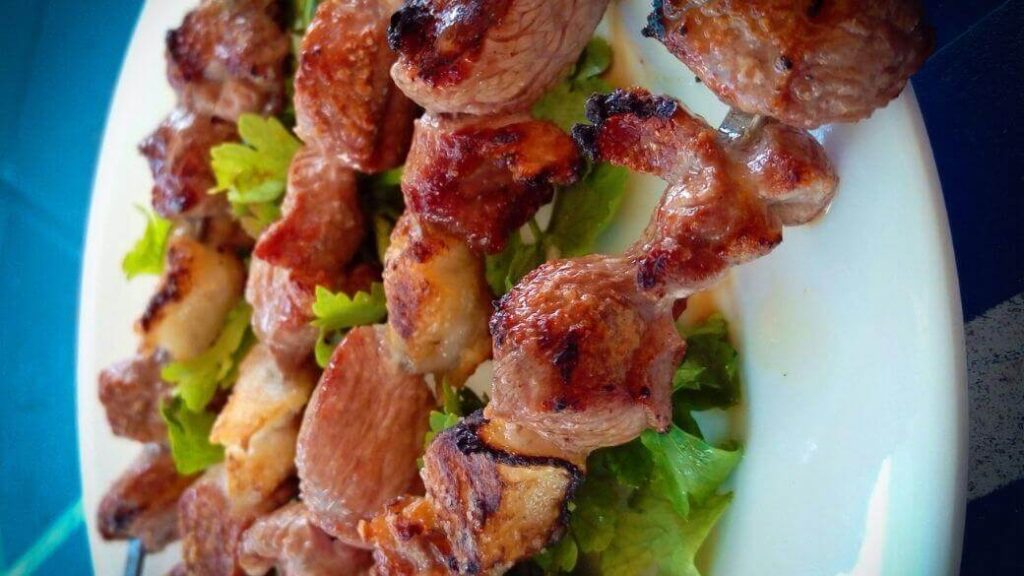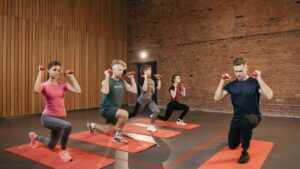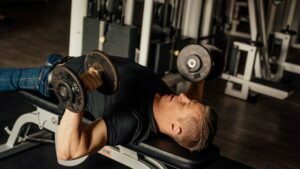Choosing what to eat before and after a workout can be a daunting task, but the effort is well worth it. When it comes to pre-workout snacks, the ingredients you pick are essential. If you’re going to put your body through its paces, you’ll want to nourish it properly first. And no, this is not a reference to pre-workout supplements. Instead, I’m referring to healthy, delectable meals and snacks.
The types of meals you already enjoy will appreciate much more now that you know they’re assisting you in reaching your fitness objectives.
Of course, what you eat following a workout is important as well. Indeed, replenishing after exercise provides your body with the nutrients it requires to recuperate from the exertion and aids in the development of larger, stronger muscles.
That implies that being mindful of what you eat before and the following exercise can help you optimize the advantages of your efforts at the gym. What is the optimal pre-workout snack? And what is the optimal post-workout diet?
According to research, we suggest the following meals and snacks for your pre and post-workout. Consider them a vital component of your training strategy.
Consumption Routines for Endurance
For serious endurance workouts lasting an hour or more, you should consume a meal or snack that is high in carbs and contains at least 300 calories. Pre-workout carbohydrate consumption enables you to exercise at a higher intensity for a longer amount of time.
Additionally, for morning exercisers, it is critical to elevate blood sugar levels in order to supply much-needed energy to maximize the effectiveness of a workout.
Following an exercise, it is critical to rehydrate with water, restore depleted carbohydrate reserves (glycogen), and consume adequate protein to drive muscle growth and repair.
It is critical to replenish carbohydrates during the first few hours following exercise, as the body is ready to store carbs as fuel in muscles for later usage.
The suggested mix is 15 to 25 grams of high-quality protein and 0.5 to 0.75 grams of carbohydrate per pound of body weight following exercise.
Keep in mind that if you’re exercising to lose weight, you’ll want to cut the calories in your meals and snacks while maintaining a comparable carbohydrate-to-protein ratio.
What are the best pre-gym meals? Take a look at our top five choices
Your gym bag is packed, your water bottle is prepared, and both shoes are located (plus! ), but are you missing something?
When it comes to fitness, eating prior to starting might assist in maintaining a steady blood sugar level. This implies that you’ll have more than enough fuel for aerobic and strength exercises.
Combine protein, healthy fats, and a few complex carbs in your diet. Naturally, incorporate some healthy goodies (you’ve earned them!). Here are our top pre-workout dietary recommendations.
1. Whole-wheat bread, peanut or almond butter, and slices of banana
There’s a reason runners adore bananas pre-race the fruit is loaded with simple carbohydrates, natural sugars, and, most importantly, potassium.
This electrolyte aids in the prevention of muscular cramps and is lost through perspiration. Peanut or almond butter has beneficial fats, while the bread is loaded with blood sugar-stabilizing complex carbohydrates.
2. Breasts of chicken, rice, and steamed veggies
Are you on the lookout for the perfect pre-gym meal? Consider the protein-complex carbohydrate combo. Additionally, veggies include fiber, which benefits digestion.
While picking chicken thighs over breasts is a personal preference, dark meat has a higher concentration of the healthy fats necessary to avoid feeling hungry throughout your workout.
3. A combination of oats, protein powder, and blueberries
The complex carbohydrates in oatmeal are slowly broken in your body, giving you more sustained energy. Supplement with a teaspoon of protein powder to increase the nutritious content.
Fruits such as berries, strawberries, and cherries are high in antioxidants. Antioxidants are incredibly important since they aid in cell damage prevention.
4. Scrambled eggs topped with veggies and avocado
Make use of the entire egg. They are high in protein and supply all eight essential amino acids when paired with the yolk. These vitamins aid in muscle development and recovery. Avocado is a good source of healthful fat, and all of the veggies are nutritional powerhouses.

Recommendations for Post-Workout Meals
Preparing post-workout meals is another enjoyable aspect of keeping a healthy body and lifestyle. The following is a selection of foods that may be eaten following a strenuous workout.
- Prepare brown rice and skinless, boneless chicken breast with your favorite low-sodium seasonings or salsa for a nourishing recovery dinner. This may be prepared in a crockpot, on the stovetop, or in the oven. Some athletes choose white rice over brown rice to avoid stomach distress caused by increased fiber consumption.
- Egg scramble: Simple one-skillet dinners that include one whole egg, veggies, and sweet potatoes with your preferred spices and freshly ground black pepper.
- Leftovers: The food you prepared the night before is screaming your name and waiting to refresh your body. Are you prepared with cooked quinoa? Toss with salad greens and balsamic vinegar for a well-balanced supper.
- Peanut butter: The all-American favorite sandwich on sprouted whole-grain bread is a great post-workout snack. Substitute sugared jam for the sugared jam and serve with a dollop of local honey. This nutrient-dense breakfast is packed with high-quality plant protein, beneficial fats, and fiber.
- Smoothie with more punch: Blend your favorite fruit with nonfat Greek yogurt or another dairy product of your choice, a splash of water, and ice. A teaspoon of your favorite nut butter is an excellent source of healthful fats.
- Wraps: Whole-grain, high-fiber wraps are an excellent way to begin a fantastic recovery meal. Add some fresh avocado, your choice of lean meat, greens, beans, or whatever else fits the wrap’s theme, roll it up, and enjoy.

Additional snacks advised by the American Council on Exercise include the following:
- 1 piece whole-grain bread.
- Banana combined with 1 tbsp almond or nut butter.
- Chocolate milk with reduced fat.
- Greek yogurt with no added fat with a half-cup of fruit or a banana.
- 2 tbsp whey protein and 1/2 banana mixed with water.
Popular protein-rich diets
Protein can account for between 10% and 35% of daily calories in an otherwise healthy person’s diet, according to the Institute of Medicine. This large range results in divergent views on what constitutes a high-protein diet.
The top limit on protein consumption, on the other hand, is more obvious: According to a 2006 analysis published in the International Journal of Sports Nutrition and Exercise Metabolism, high protein intake is defined as over 35% of daily calories and may result in significant health hazards such as elevated insulin levels, gastrointestinal problems, and more.
The same study establishes a relationship between weight reduction and a diet that contains 25% protein without the danger of overconsumption.
The majority of protein-focused diets are also low-carb, and weight-loss programs extolling the benefits of this strategy have existed for decades. (For example, the Atkins diet was devised in the 1960s.)
While carbohydrate recommendations vary, they normally demand fewer than 45 to 65 percent of daily calories to come from carbs. While research indicates that low-carb diets are successful in weight reduction, their restrictive nature may make them challenging to maintain long-term.
Additionally, a 2012 clinical research published in the journal Physiology & Behavior discovered that the efficacy of these regimens is contingent upon the high-protein component, not the low-carb component.
The following is an overview of several common high-protein diet plans:
1. The ketogenic diet abbreviated “keto” is sometimes mixed in with high-protein diets. However, it is primarily a high-fat diet. The conventional ketogenic diet proposes that you consume 70% of your calories from fat, 20% from protein, and 10% from carbohydrates.
Paleolithic diet: This plan is inspired by our prehistoric forefathers and depends on foods that were presumably available during the Stone Age.
Lean meats, poultry, fish, eggs, nuts, and seeds all provide protein. While fruits, vegetables, and herbs are included, the diet excludes other high-protein items such as dairy, grains, beans, and legumes.
2. The Zone Diet: Originally intended to combat inflammation, this regimen proposes that you consume 30% protein, 40% carbohydrates, and 30% fats on a daily basis.
Carnivore diet: As the name implies, this diet requires you to consume solely animal items. The list of approved foods includes meat, poultry, eggs, and some dairy items.
Unlike the other programs that advocate for decreased carbohydrate consumption, this one (which is unsupported by scientific research) advocates for a carb-free diet.
On any high-protein diet, how you assemble your plate is crucial since some of the most restricted eating regimens may have detrimental health consequences.
For example, choosing protein-rich meals that are too high in fat may result in nausea, diarrhea, and other unpleasant side effects.
On the other side, if you substitute too many nutrients and fiber-dense meals (such as fruit, vegetables, and whole grains) for high-protein foods in an attempt to cut carbohydrates, you risk constipation and micronutrient deficiencies.
Avoid specific meals before exercising
These meals may obstruct your workout:
- Spicy foods
- Beans or broccoli
- Foods that are high in fat
- Foods that are high in protein
Even though a dish is nutritious, this does not guarantee that it is an ideal pre-workout snack. Spicy and gaseous meals, on the other hand, do not function.
Foods heavy in fat and protein might detract from your workout by taking longer to digest. If you’re doing a longer aerobic activity in the heat, such as a bike ride or run, protein can raise your basal temperature, increasing your heart workload.
The general guideline is that the closer you are to the action, the less food you should consume. Due to the length of time required to digest a whole, mixed meal, you should consume a proper “pre-game” meal three to four hours before exercising.
The closer your workout gets, the less food you should ingest.
You can eat up until the moment of activity as long as you consume some basic carbohydrates. If you have a balanced meal that is high in fat and protein, blood will be redirected away from functioning muscles and toward digestion.
If you’re doing a lot of heavy lifting, adding protein before, during, and after may help with hypertrophy.
Maintain a nutritious diet throughout the day, especially on days when you do not exercise
Your regular meals and food consumption serve to keep you fed, and your muscles fueled. Maintaining a consistent dietary routine benefits your health in more ways than one. Even a single day without sufficient energy can have a bad effect on your hormones, hydration, and mood.
In general, it’s beneficial to arrange meals and snacks around your training schedule and to adapt them accordingly to optimize energy.
Credits: Gravity Transformation – Fat Loss Experts
Conclusion
Trial and error will be required to determine which nutritious foods work best for pre and post-workout. Having a nutritional strategy in place will ensure that your post- and pre-workout meal plan is successful.
Consuming the proper nutrients to refuel your body following exercise is critical to accomplishing your goals. Additionally, avoid skipping meals and remember to keep yourself hydrated.





Pingback: 15 Best Dumbbell Chest Exercises for Upper Body Workouts
Pingback: How to Get Ripped in 4 Weeks with a Meal Plan - Weight Loss
Pingback: Health Benefits of Chia Seeds: How to Eat Them - Fitnessbookz